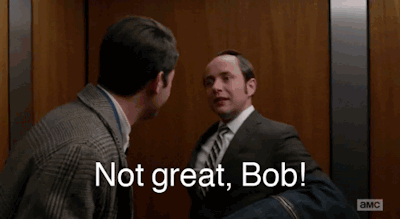Mad Men's Miracle Mets: Tracking the Amazin' Mets Through Don Draper's 1969

When viewers first got lost in Don Draper's mysterious gaze, he was just an ad man trying to juggle his work, his family, his mistress, his new mistress, and (SPOILER ALERT) a stolen identity. The year was 1960 and times were simpler: cigarettes weren't bad for you, "meetings" were more like happy hours, and you could rely on the New York Mets to be the butt of every joke.
In their first seven years of existence, the measly Mets managed to finish better than last just two times (when they finished ninth out of the National League's 10 teams). The Mets only won 70 games once in that span and, since the Giants and Dodgers took off for the Left Coast like Teddy and Pete, had properly secured their status as New York's "other team."
But then, 1969 happened. Hippies-with their hair and their beards and their message of "free love"-began to hold sway in American culture, the anti-war movement gained traction, eventually resulting in a massive protest in Washington D.C., NASA put men on the moon, and the Mets somehow figured out a way to turn things around.
Throughout the first half of the seventh and final season of Mad Men (it's split into two parts, because Emmys), we'll track the progress of Dick Whitman Don Draper, Sterling Cooper & Partners, 'Murica, and the Miracle Mets. Consider it your mini pop culture history lesson with some actual history and a bunch of baseball thrown in.
Our saga begins in the early weeks of 1969. Tricky Dick has just been sworn in as the 37th President of the United States, Marvin Gaye's "I Heard it Through the Grape Vine" is atop the Billboard chart, and the New York Mets were busy not participating in baseball's offseason.
On the heels of a 73-89 1968 campaign, the Mets made no major acquisition before the start of the next season. In fact, an overwhelming majority of the Mets lineup and starting rotation remained in tact:

It's safe to say that expectations weren't high.

The second episode of the Mad Men season jumps to Valentine's Day. Peggy is scorned and stomping around SC&P threatening to throw out everyone's flowers because Ted's in L.A. cheering for Don Sutton, probably. Don takes a lunch with another agency and takes a break from talking shop long enough to mention Bill Bradley and the New York Knicks, who were on a 10-game win streak, at the time.
About that time, the Mets were set to start Spring Training and Most of New York's baseball fans were too busy mourning the retirement of Mickey Mantle to notice that the Mets punted in the offseason. The Mets, however, were focused on trying to acquire some offensive production in the form of Braves catcher/infielder Joe Torre. Torre was unhappy in Atlanta and the team had been shopping him for months. Amos Otis* turned out to be the deal breaker, as the Mets considered him an "untouchable." Torre ended up with the Cardinals and the Mets limped into 1969 with the same lineup that was less than impressive the year before.
*Otis batted .151 in 93 at-bats for the Amazin's
Though their lineup was stagnant, the parallels in the team's pitching staff provided a bit more hope, as it was stocked with young pitchers, each a year older and a year closer to their baseball prime. Koosman, Jerry. McGraw, Tug. Gentry, Gary. Ryan, Nolan. Oh, and some guy named Seaver. Maybe you've heard of him?
As the 23-year-old ace of the '68 Mets, Seaver went 16-12 with a 2.20 ERA. The optimism about Seaver's potential contributions weren't enough to convince the critics, though, as many pundits picked the Mets to finish the year worse than the expansion Expos. Obviously, such would not be the case.
And so, it's only fitting that the second installment of the first part of Mad Men's final season ended with a little ditty from The Zombies titled "This Will Be Our Year."